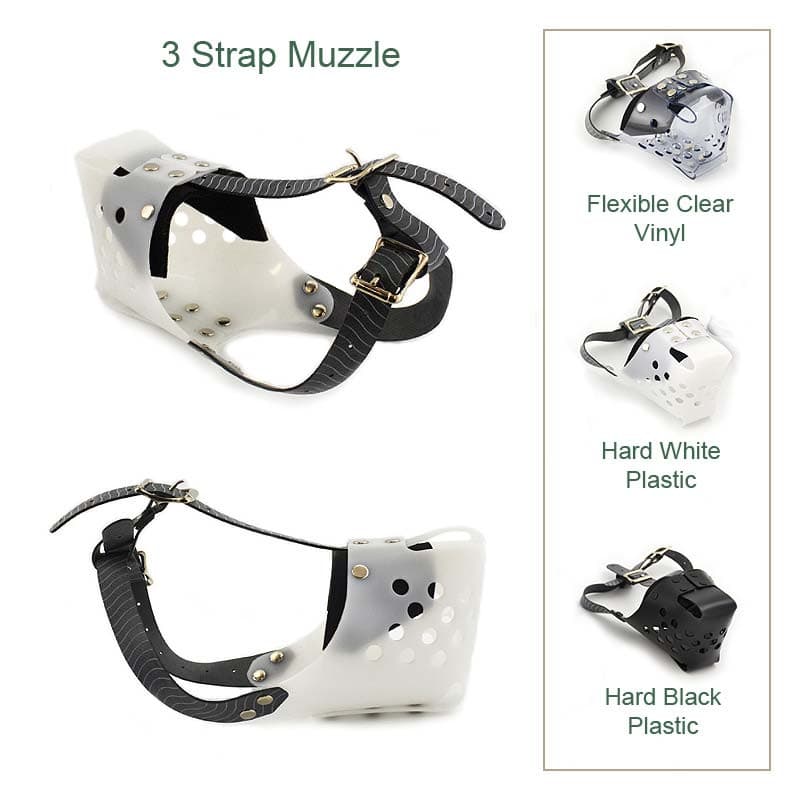Himalayan Dog Chews: A Tasty and Long-Lasting Treat

Introduction
As dog owners, we all want to give our furry friends the very best—especially when it comes to treats. We look for snacks that are safe, nutritious, and able to satisfy our dogs' natural urge to chew. But not all dog chews are created equal. Some are loaded with additives, some are difficult to digest, and others just don't last very long.
That’s where Himalayan dog chews, also known as yak chews, come into the picture. These long-lasting, natural chews have grown in popularity for good reason. Made from yak and cow milk, they offer a healthy, protein-packed, and highly satisfying chew experience for dogs of all sizes.
In this blog, we’ll explore everything you need to know about Himalayan dog chews—what they are, how they’re made, their benefits, and why they may be the perfect treat for your pet.
What Are Himalayan Dog Chews?
Himalayan dog chews, often referred to as yak chews, are a type of hard, natural dog treat made using traditional methods from the Himalayan region, especially Nepal. These chews are crafted from just a few simple ingredients: yak milk, cow milk, a pinch of salt, and lime juice.
The mixture is boiled and pressed into dense, durable blocks that are dried and smoked for weeks. The result is a tough, long-lasting chew with a mild smoky flavor that dogs love.
What makes these chews special is their simplicity. There are no chemicals, no artificial flavors, and no preservatives—just wholesome ingredients dogs have been enjoying for generations.
How Are Yak Chews Made?
One of the reasons Himalayan dog chews are considered so safe and natural is the way they’re made. The process is simple, traditional, and time-tested.
First, yak and cow milk are collected from animals that graze in the high-altitude regions of the Himalayas. The milk is heated and mixed with lime juice and salt, which causes it to curdle. The curds are then collected, pressed into blocks, and shaped.
These blocks are then smoked over open flames for several weeks, which not only helps them harden but also gives them their distinctive flavor and long shelf life. Smoking also naturally preserves the chew without needing chemical additives.
This age-old process has been used in the region for centuries to make hard cheese for human consumption—and now, it’s been adapted into a safe and enjoyable treat for dogs.
Why Choose Himalayan Dog Chews?
If you’ve ever stood in the dog treat aisle overwhelmed by choices, you’re not alone. There are many types of dog chews on the market, but Himalayan dog chews stand out for a few important reasons.
Natural and Healthy
These chews are made with minimal ingredients, all of which are natural and safe. You won’t find artificial preservatives, added sugars, or strange chemicals on the ingredient list. This makes them a good option for health-conscious pet owners and dogs with food sensitivities.
They are also high in protein and low in fat, making them a nutritious option that won’t add unnecessary calories to your dog’s diet. Since they’re made primarily from milk, they contain essential nutrients like calcium that support bone and dental health.
Long-Lasting Entertainment
One of the top reasons dog owners love yak chews is that they last. Unlike soft treats that disappear in seconds or rawhide chews that can break apart dangerously, Himalayan dog chews are dense and durable.
Dogs enjoy gnawing on them for hours, which helps satisfy their instinct to chew. This long-lasting chew time makes them great for keeping your dog occupied, especially during moments when you need some quiet time or when they’re left alone.
Dental Health Benefits
As your dog chews, the hard texture of the yak chew works to scrape away plaque and tartar from their teeth. This helps reduce the risk of gum disease and supports overall dental hygiene.
While not a replacement for brushing your dog’s teeth, these chews can certainly help maintain cleaner teeth and fresher breath.

Comparing Himalayan Chews to Other Dog Treats
To better understand why Himalayan dog chews are such a strong choice, let’s compare them to some other common dog chew options.
Yak Chews vs. Rawhide
Rawhide has been a popular chew for decades, but it comes with some risks. Rawhide is made from animal hides and often treated with chemicals during processing. It’s not fully digestible, and if swallowed in large chunks, it can cause blockages.
Himalayan chews, on the other hand, are made from dairy, not hide. They’re much more digestible and free of dangerous chemicals. When your dog eventually swallows the last small piece, it’s much safer to pass through the digestive system.
Yak Chews vs. Bully Sticks
Bully sticks are another popular natural chew. Made from beef muscle, they’re digestible and often enjoyed by dogs. However, they can have a strong odor that some pet parents find unpleasant.
Yak chews are nearly odorless and tend to last longer, especially for moderate chewers. They also produce less mess and don’t become slimy as easily.
Yak Chews vs. Synthetic Dental Chews
Many synthetic dental chews claim to promote oral health, but they often contain artificial colors and flavors. Yak chews provide natural dental support without any of those additives.
Are Himalayan Chews Safe for All Dogs?
For the most part, yes—Himalayan chews are safe for most dogs. However, as with any chew, supervision is important.
These chews are very hard, so dogs with weak or damaged teeth may not be the best candidates. Puppies, senior dogs, or dogs with dental issues should be given softer alternatives or monitored closely while chewing.
Always choose the correct size for your dog’s breed and chewing style. Larger dogs need thicker, longer chews, while smaller breeds may do better with thinner sticks.
When your dog has chewed the treat down to a small piece that could be a choking hazard, remove it. The good news is that you don’t need to waste that last bit. You can microwave the small leftover piece for about 30–45 seconds, and it will puff up into a crunchy, cheese-like snack your dog will love.
How to Use Himalayan Dog Chews Effectively
To get the most out of your yak chews, keep these tips in mind:
-
Limit chew time: Let your dog chew for 20–30 minutes at a time, then take the chew away. This prevents over-chewing, helps the treat last longer, and reduces the chance of dental strain.
-
Store properly: Keep chews in a cool, dry place when not in use. This helps them stay fresh and clean.
-
Supervise your dog: Especially when they’re trying a yak chew for the first time. Watch for signs of overly aggressive chewing or attempts to swallow large pieces.
-
Microwave the ends: As mentioned above, puffing up the final piece into a crispy treat helps reduce waste and offers a fun change of texture for your dog.
Choosing the Right Size and Type
Not all yak chews are the same. They come in a variety of shapes and sizes, and it’s important to pick the right one based on your dog’s size and chewing habits.
-
Small Dogs (under 20 lbs): Choose thin or mini chews.
-
Medium Dogs (20–50 lbs): Standard-size sticks usually work well.
-
Large Dogs (over 50 lbs): Go for thick or jumbo chews for durability.
-
Aggressive Chewers: Look for reinforced or extra-hard versions.
-
Sensitive Chewers: Choose softer or slightly thinner options.
At Pet Expertise, you can find yak chews curated by size and durability, so you’ll know you’re getting the right match for your pet.
Why Pet Expertise Recommends Yak Chews
At Pet Expertise, we’re passionate about helping dog owners find the best natural products for their pets. Our selection of Himalayan dog chews is carefully chosen based on quality, ingredient integrity, and customer feedback.
We offer only the safest and most effective chew options—products we would give to our own dogs. Our goal is to provide solutions for dog owners who care deeply about their pets’ health, happiness, and well-being.
If you’re looking for long-lasting, natural chews that dogs truly enjoy, our yak chews are a top pick. They’re hand-selected for quality and offered in a variety of sizes to suit your dog’s needs.
Conclusion: The Smart Choice for Happy, Healthy Chewers
Himalayan dog chews aren’t just a trend—they’re a smart, natural solution for dogs that love to chew. With their long-lasting texture, high protein content, and simple ingredients, yak chews check all the boxes for safety, health, and enjoyment.
They’re a great alternative to rawhide, synthetic treats, or overly processed chews. Whether your dog is a power chewer or just likes a good nibble now and then, there’s a yak chew that’s right for them.
If you’re ready to explore a better chew for your dog, browse our selection of premium yak chews and natural treats at Pet Expertise. We’re here to help you choose smarter—and chew safer.
Frequently Asked Questions (FAQs)
Yes, but only for older puppies who have finished teething. The chews are very hard, which may not be suitable for delicate baby teeth. Always supervise your puppy during chewing sessions, choose an appropriate size, and remove the chew if it becomes small enough to pose a choking hazard.
Yak chews are long-lasting and can keep dogs busy for several hours or even days, depending on their size and chewing strength. They’re especially ideal for moderate to aggressive chewers. Their dense texture provides a satisfying challenge, making them a favorite among dogs that love extended chewing sessions.
When the chew becomes too small, don't toss it. Instead, microwave it for about 30 to 45 seconds. It will puff up into a light, crunchy treat that's safe for your dog to eat. This helps reduce waste and adds variety to your dog's treat options.
Always check the label. Authentic yak chews should only include yak milk, cow milk, salt, and lime juice. Avoid products that list artificial colors, flavors, or preservatives, as these can trigger allergies or digestive issues. Simpler is better when it comes to safe, natural dog chews.
Yes, most dogs with sensitive stomachs tolerate yak chews well because they contain limited, natural ingredients. However, every dog is different. Introduce the chew slowly and monitor your dog for any signs of discomfort or digestive upset. If needed, consult your vet before offering new treats.
- Choosing a selection results in a full page refresh.
- Press the space key then arrow keys to make a selection.



